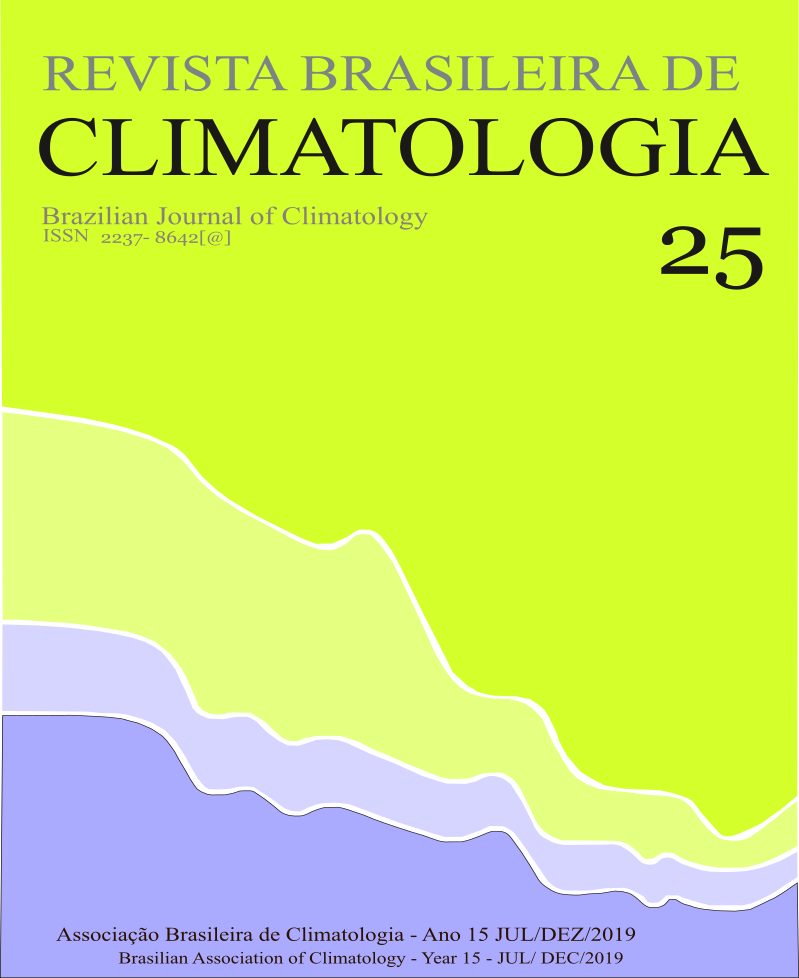PREDICTING THE IMPACTS OF SEA-LEVEL RISE ON THE AMAZON MACROTIDAL MANGROVE COAST
DOI:
https://doi.org/10.5380/abclima.v25i0.60891Palavras-chave:
Mangrove forests, Amazonian coast, Climate change, Sea-Level Rise, Computational modeling, Geographic Information System.Resumo
Brazil has the largest continuous area of mangrove forests in the world, the Amazon Macrotidal Mangrove Coast (AMMC). The objective of the present study is to simulate the response of eastern Amazonian mangroves to sea-level rise, and to produce a vulnerability assessment for this section of the Brazilian coast. We used a spatially explicit model, based on cellular automata and Geographic Information System (GIS) to identify resistance patterns, migration and/or inundation of these mangroves for different events of sea-level rise (SLR). The simulation considers 90 elevation events from 0.00318 m to 0.2862 m according to an arithmetic progression of reason 0.00318 m for the time interval from 2010 to 2100. The adopted SLR rate was 3.18 mm / year (0.00318 m / year), this rate corresponds to an average of sea elevation values observed for the Brazilian coast during the mid-twentieth century and early twenty-first century. At the end of the simulation (year 2100), the original mangrove area (4,180 km2) was reduced to 2,916 km2, representing a loss of 30.24%. Our simulation also showed significant landward migration of the mangroves, and the modeled loss of the original mangrove area was compensated by a net addition of 301 km2 of new mangroves inland, a net increase of 7.2% in the total mangrove area (4,481 km2 in 2100). These results suggest that mangrove forests in the AMMC can present a pattern of area increase and migration to the continent from the projected SLR. These findings can help the identification of migration corridors for the Amazonian mangroves and the development of adaptation strategies in face of impending SLR.
Downloads
Publicado
Como Citar
Edição
Seção
Licença
A aprovação dos artigos implica a aceitação imediata e sem ônus de que a Revista Brasileira de Climatologia terá exclusividade na primeira publicação do artigo. Os autores continuarão, não obstante, a deter os direitos autorais. Os autores autorizam também que seus artigos sejam disponibilizados em todos os indexadores aos quais a revista está vinculada.
Os autores mantém seus direitos de publicação sem restrições
A Comissão Editorial não se responsabiliza pelos conceitos ou afirmações expressos nos trabalhos publicados, que são de inteira responsabilidade dos autores.
A Revista Brasileira de Climatologia oferece acesso livre imediato ao seu conteúdo, seguindo o entendimento de que disponibilizar gratuitamente o conhecimento científico ao público proporciona maior democratização do conhecimento e tende a produzir maior impacto dos artigos publicados. Os artigos publicados na revista são disponibilizados segundo a Licença Creative Commons CC-BY-NC 4.0 (https://creativecommons.org/licenses/by-nc/4.0/). Segundo essa licença é permitido acessar, distribuir e reutilizar os artigos para fins não comerciais desde que citados os autores e a fonte. Ao submeter artigos à Revista Brasileira de Climatologia, os autores concordam em tornar seus textos legalmente disponíveis segundo essa licença




